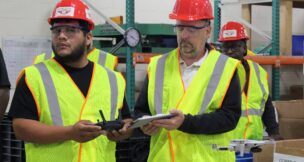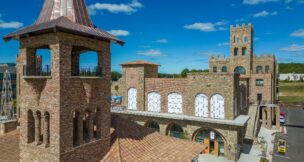What Spartanburg County plans to do with $5M in federal funding
Krys Merryman //December 12, 2022//
Spartanburg County is working on changing its county animal welfare system with the use of $5 million in American Rescue Plan funds.
The initiative is part of a broader funding strategy to construct a new pet resource center that was proposed at the Spartanburg County Council meeting on Nov. 21.
The county council had a special meeting on Nov. 30, where Sara Pizano of Team Shelter USA, who has been a veterinarian for more than 30 years and was selected by the county to conduct a study and identify the needs in Spartanburg County’s animal community, presented her findings and recommendations regarding the pet resource center based on her assessment.
“I want to look at this as a positive opportunity for our community, and I think it will be with local input,” said Spartanburg County Councilman Justin McCorkle.
 The traditional county animal welfare system in the country dates back about 150 years, which was originally created to round up dangerous animals, such as those with rabies, leading to their euthanization, said Pizano.
The traditional county animal welfare system in the country dates back about 150 years, which was originally created to round up dangerous animals, such as those with rabies, leading to their euthanization, said Pizano.
“It’s not a productive system at all,” she added. “We have now been trying to work within this broken system. You have the opportunity to create a new system and do it right.”
Pizano surveyed approximately 50 animal welfare organizations in the area, resulting in finding the best practices of those organizations. She discussed the importance of collaborating with community partners and implementing proactive programs that keep animals out of the shelter altogether, as the proposed pet resource center, ideally, would serve as a “last resort” option.
“It’s about creating a better and more appropriate community-based animal welfare system,” said Pizano.
Since 2013, Pizano has done consults and assessments for shelters in nearly 30 states, including several in South Carolina. In most of these shelters, she said, there have been municipal programs.
“What I saw were the same things, the same challenges, and thankfully the same solutions, no matter where I’m at in the country,” she said. “That’s important to mention, because it means there is great hope here. Thirty years ago, when I started in animal welfare, I can tell you we didn’t have much hope. We didn’t see how we were going to stop euthanizing tens of millions of animals in shelters. It’s no longer like that.”
Highlights from Pizano’s study include:
- Partnerships will be key in the county’s success;
- The county needs right-sized Safety Net programs as they help to reduce the number of shelter intakes;
- A community foster-based welfare system to help reconnect pets with their owners and to re-home others; and
- Volunteers are vital when it comes to the animals’ quality of life.
The country is facing unprecedented difficult times when it comes to animal control enforcement and homeless pets, especially post-COVID.
“So many of these calls that come in involve the fundamental issue of lack of access to care,” said Pizano. “This is a business model that expands access to care for clients while maintaining a profitable, sustainable veterinary clinic.”
Currently, a pet shelter intake is separating pets and people, and that’s what needs to be reversed with the right programs in place, she added. In a 2015 ASPCA study, it showed 76% of pet owners who surrendered their pets didn’t want to; they just needed temporary help that was not available to them, Pizano said.
Similar projects take, on average, around 18 months from groundbreaking to completion, said Spartanburg County Councilwoman Jessica Coker. But given the dynamics of the proposed facility and its robust nature, the county is looking around two years to complete from its construction start date, she said. Coker took the lead on the proposed project since its inception from studying the project to visiting the various facilities with Pizano.
For the project, the county will need a minimum of 2.7 acres of land to build a one-story facility near a major thoroughfare, said Pizano.
The final cost of the project is to be determined.
“We are very pleased with Pizano’s report and hope we can come up with a great solution for our county,” said Coker. “We are doing everything we can to make sure this project moves forward as fast as it can.”
This is a project that’s long overdue for the county to take care of, said Spartanburg County Councilman David Britt.
“I was on this council when we euthanized thousands and thousands of animals, and we didn’t know what else to do back then,” said Britt. “We were stuck in a paradigm. But now we have this opportunity to do it differently. It says a lot about us if we take this opportunity to take care of our animals. This is all of us working together to solve this issue.”
T















